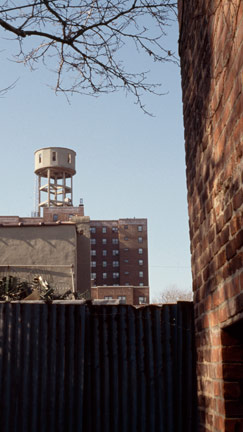
All of my work has its foundation in the age-old techniques and conventions of the potter. Whether the piece is functional or sculptural it is always based on a vessel form. The simplest thrown plate as well as the more intricate hand built sectional hilltown sculpture are conceived of and built from the inside out and become upon completion a type of clay container.
There is a flow in my work, from one piece to another, from one series to another. A new idea takes shape. The first successful piece inspires the next. Several pieces have similar ideas and become part of a series. Variations occur within the series. Some variations spawn a new idea and the cycle begins again.
I keep completed work on display around the studio so I am constantly absorbing information about older pieces. What can I learn from them? How can I improve on the mistakes and utilize the successful elements?
My creative process is circular, always moving, taking in new ideas and inspirations, while keeping in view all that has gone before.
Here is an example: The view from the backyard of my Brooklyn studio is of a water tower topping a local housing project. Its massive form raised on stilts had been my visual inspiration for two years. I translated into clay the contrasts between the solidity of the body and the delicacy of the legs.
In April l997, a short trip to the hill towns of Tuscany exploded my architectural vocabulary in new directions. Back home, these new Mediterranean visions formed the basis of the first ‘Fantasy house’ series. Although the original stilts were still part of the pieces, the solid bodies were opened up to form windows and doors.
Then after viewing some ancient Japanese, Haniwa sculptures at the Minneapolis Museum of Art, I returned to my studio and transformed these houses into horses. Although I continued to use the same visual punctuations of openings (windows and doors), these newer pieces became more blocky and statuesque and the handles on the tops of the houses became the manes on the horses.
Perhaps my earlier stated circle of creation is also like a DNA spiral, one which affords a view of completed work from a new perspective while providing a glance of the road ahead.
ACKNOWLEGEMENTS
I
would like to acknowlege the following photographers: Briana Blasko, for my artist photo, and Kevin Noble, Bob Barrett, and Hero Ihara for the photographs of my work. In addition I would like to acknowlege Jaimee Uhlenbrock of New Paltz Webworks for my web site. Special thanks go to my husband Steven Murray, my first line "go-to guy," for his priceless assistance in text editing, image preparation, photos, support, and encouragement.